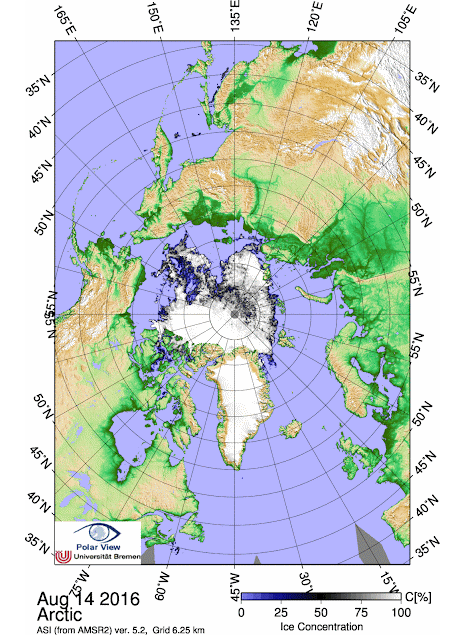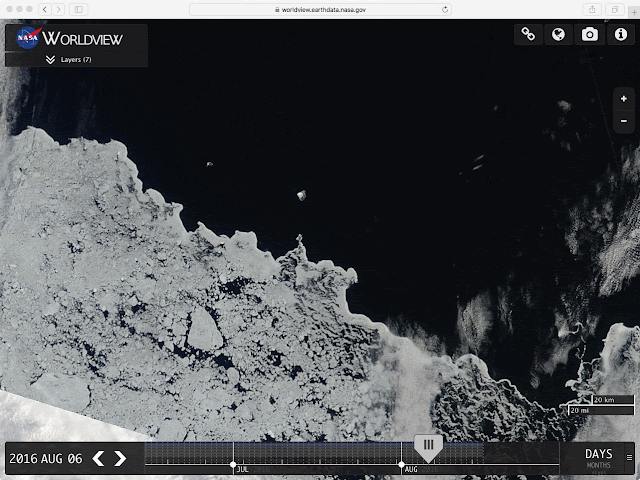There is a sea ice lake, the size of Lake Superior, 85N 135E, the remnant of GAC3 again dispersing ice at Centre of this Cyclone. The Wrangel Island ice bridge seems on the verge of total collapse. The other, towards Laptev sea, only has less than 1/3 of its pack apparently solid. The Atlantic Front appears to be moving North. There is significant extent numbers consisting of 80% or more of seawater, which would count as 100% sea ice.
The entire Eurasian sector of the Pole is very fluid by the presence of a lot of open water and has had a significantly changed icescape especially towards Bering Sea in 10 days. More movement of sea ice is within denser sea ice areas in the North Atlantic sector:Daily Sea ice with open water movements are visible enough despite partial cloudiness, some areas have modest displacements, some appear steady, this water and ice displacements affects the look on the JAXA map above. WD August 25, 2016

















































